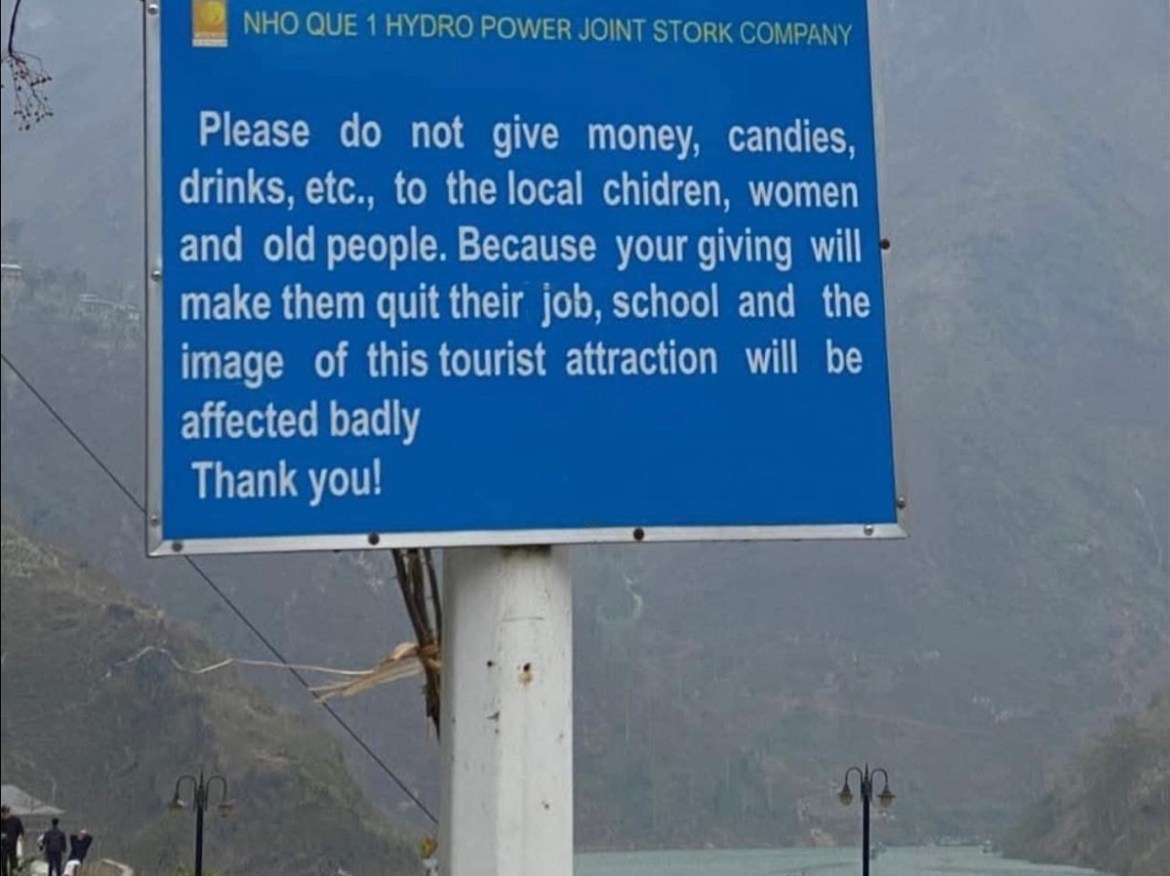A new public notice has been placed near the Nho Que River, a popular stop along the Ha Giang Loop, as concerns grow over the impact of mass tourism on local ethnic communities, particularly the Hmong people.
The sign serves as a reminder for visitors to respect the region’s culture and traditions, but lacks the full context of the challenges facing local villagers.

The Reality Behind Tourism in Ha Giang
Ha Giang’s breathtaking landscapes and cultural richness have drawn increasing numbers of visitors, yet the benefits of this tourism boom are not equitably distributed. While tourists often encounter Hmong children selling handmade textiles, offering hair braiding services, or posing for photos, these activities stem from economic necessity rather than choice. Many rural families struggle with limited access to economic opportunities, making tourism one of the few viable sources of income.
However, most of Ha Giang’s licensed tour operators, restaurants, homestays, and guides are owned by Vietnamese entrepreneurs from the lowlands. This means that a significant share of tourism revenue does not reach the Hmong villagers, who instead bear the burden of increased tourism without fair economic returns.
The Hidden Costs of Mass Tourism
The rapid influx of tourists has also brought unintended negative consequences for local communities:
- Disruptions to daily life: Large tour groups often overwhelm small villages, bringing noise, traffic, and an influx of tourists who may dress inappropriately or behave disrespectfully.
- Health concerns for children: Some tourists distribute sweets to local children, inadvertently contributing to dental health issues due to a lack of access to proper dental care.
- Cultural exploitation: Many visitors take photographs of Hmong villagers, especially children, without consent, reducing their daily lives to mere tourist attractions.
- Environmental impact: Reckless driving on the Ha Giang Loop, excessive plastic waste, and late-night karaoke sessions have disrupted both the natural beauty and cultural serenity of the region.
How Tourists Can Make a Difference
Ha Giang is home to centuries-old Hmong traditions, and tourism should be managed responsibly to ensure that these communities are not exploited or displaced. Visitors can contribute to sustainable tourism by:
✅ Choosing small-scale, ethical tour operators that work directly with ethnic minority groups.
✅ Avoiding large, party-oriented tours, which contribute to disruptions and disrespectful behavior in local communities.
✅ Refraining from handing out candy or money to children, as this creates long-term dependency rather than sustainable support.
✅ Respecting local customs and traditions, including dressing modestly, asking for permission before taking photos, and keeping noise levels down.
✅ Supporting local businesses, such as Hmong-run homestays, guides, and craft sellers, to ensure that economic benefits remain within the community.
The Future of Tourism in Ha Giang
As Ha Giang continues to grow as a tourist destination, the focus must shift toward sustainable and community-based tourism that empowers ethnic minorities rather than exploiting them. Responsible travel choices can help preserve the cultural heritage, dignity, and livelihoods of the Hmong people who have called these lands home for generations.
If ayou’re planning to ride the Ha Giang Loop, take the time to research your tour provider and choose ethical travel options. Your decisions directly impact the people and culture that make Ha Giang such a unique and beautiful destination.
Related
Discover more from Vietnam Insider
Subscribe to get the latest posts sent to your email.
